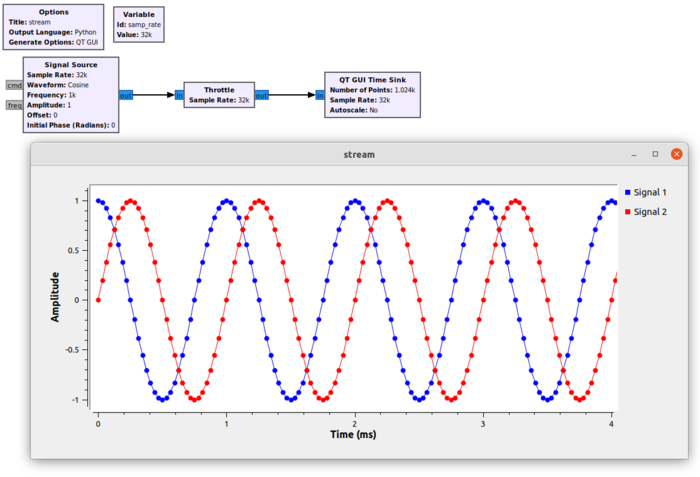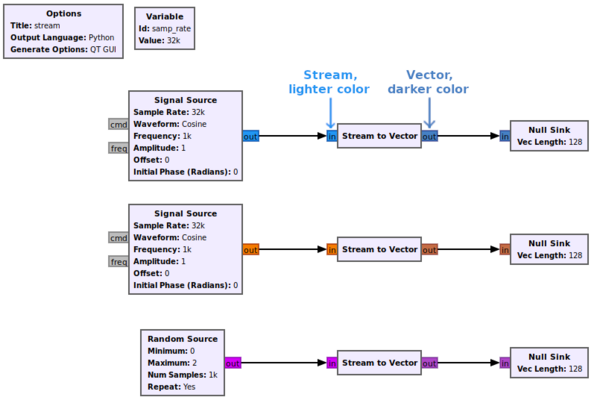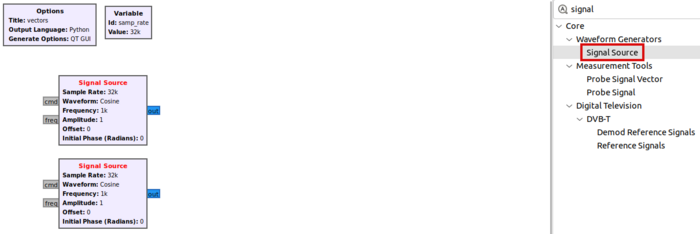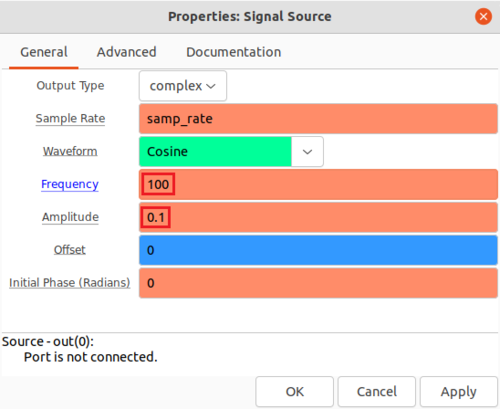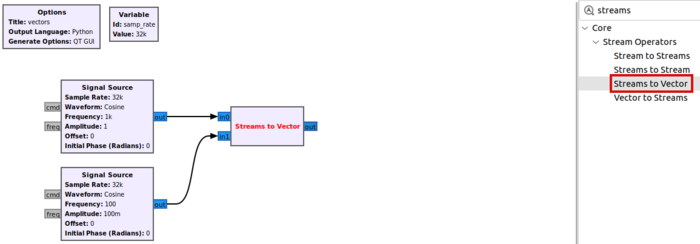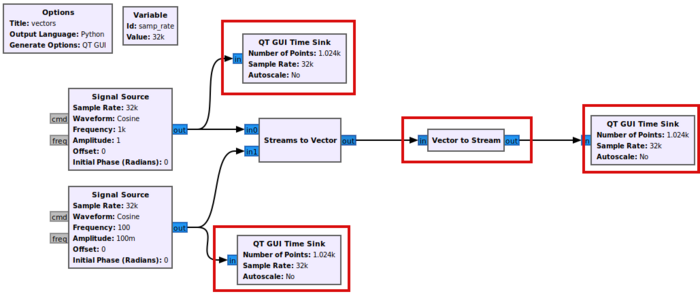Streams and Vectors: Difference between revisions
Mattcarrick (talk | contribs) No edit summary |
Mattcarrick (talk | contribs) No edit summary |
||
| Line 39: | Line 39: | ||
The ''Streams to Vector'' block acts as an interleaver, taking the two serial ''stream'' inputs and converting them to a two-dimensional ''vector'' output. The block takes the sample from the ''in0'' port and places it into the first element in the output ''vector'', and then takes the a sample from the ''in1'' port and places into the second element in the ''vector''. | The ''Streams to Vector'' block acts as an interleaver, taking the two serial ''stream'' inputs and converting them to a two-dimensional ''vector'' output. The block takes the sample from the ''in0'' port and places it into the first element in the output ''vector'', and then takes the a sample from the ''in1'' port and places into the second element in the ''vector''. | ||
Search for the ''Vector to Stream'' block which will serialize the vector data, and then add three ''QT GUI Time Sink'' blocks: | |||
[[File:InterleavedSignalSourceWithTimeSinks.png|700px]] | |||
Revision as of 20:53, 6 January 2022
This tutorial will describe the difference between a Stream and a Vector. You can find the previous tutorial here: Converting Data Types
Streams
Streams in GNU Radio are what convey the information between blocks and are represented by the arrows connecting blocks in a flowgraph. A stream must have a data type, such as Float 32 or Byte. A stream carries 1 sample for each time instance and are used to represent and process serial data.
The Signal Source block produces a Complex Float 32 stream. The output of the block at each time instance contains 1 complex sample:
Vectors
Vectors carry multiple samples per time instance, representing data in parallel. By analogy, a stream represents a scalar at each time instance whereas a vector represents an array at each time instance.
GRC uses lighter colors to represent streams and darker colors to represent vector outputs:
Streams and Vectors Flowgraph Example
The following example will describe how to convert a stream to a vector and back to a stream. Two complex sinusoid streams will be converted to a 2-element vector, displayed, and then converted back to their independent streams.
Add two Signal Source blocks to the workspace:
Edit the parameters of the second Signal Source to have a frequency of 100 and amplitude of 0.1 to distinguish it visually from the first Signal Source:
Click OK to accept the parameters.
Search for the Streams to Vector block, drag it into the workspace and connect it to the Signal Source blocks:
The Streams to Vector block acts as an interleaver, taking the two serial stream inputs and converting them to a two-dimensional vector output. The block takes the sample from the in0 port and places it into the first element in the output vector, and then takes the a sample from the in1 port and places into the second element in the vector.
Search for the Vector to Stream block which will serialize the vector data, and then add three QT GUI Time Sink blocks:
